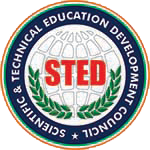Advanced Cardiovascular Life Support (ACLS)
Course Overview
1. Application of ACLS Algorithms
Participants learn to apply structured, evidence-based algorithms to guide decision-making during:
- Cardiac Arrest (Pulseless VT/VF, Asystole, PEA).
- Bradycardia and Tachycardia with a Pulse.
- Acute Coronary Syndromes (ACS).
- Stroke (Recognition and initial management).
Algorithms emphasize prompt recognition, rapid intervention, and sequential steps tailored to the clinical scenario, including CPR, defibrillation, drug administration, and post-resuscitation care.
2. Interpretation of Arrhythmias
ACLS training includes:
- Recognition of life-threatening rhythms such as:
- Ventricular fibrillation (VF)
- Pulseless ventricular tachycardia (VT)
- Asystole
- Pulseless electrical activity (PEA)
- Symptomatic bradycardia
- Supraventricular and wide-complex tachycardias
- ECG interpretation skills to accurately diagnose and respond to rhythm changes in real-time.
3. Use of Appropriate Drug Therapy
The course covers indications, dosages, and routes of administration for key emergency medications including:
- Epinephrine, Amiodarone, Atropine, Adenosine, Dopamine, Lidocaine, and others.
- Understanding pharmacodynamics and side effects relevant to cardiovascular emergencies.
- Emphasis on timing and integration of drug therapy with CPR and defibrillation.
4. Knowledge of Airway Management and Adjuncts
Participants gain hands-on experience in:
- Opening and maintaining airways using manual and advanced techniques.
- Bag-valve-mask (BVM) ventilation and proper oxygen delivery.
- Use of airway adjuncts such as oropharyngeal airways (OPA), nasopharyngeal airways (NPA), and supraglottic devices.
- Endotracheal intubation and verification techniques (e.g., waveform capnography).
5. Effective High-Performance Team Skills
The course emphasizes team-based resuscitation, with focus on:
- Role assignment, clear communication, and closed-loop feedback.
- Leadership and mutual respect under high-stress conditions.
- Minimizing interruptions in chest compressions and coordinating interventions.
- Critical debriefing and reflection to improve future performance.
6. Simulated Clinical Scenarios
Realistic simulations are a core part of ACLS training, allowing participants to:
- Apply learned skills in time-sensitive, high-pressure environments.
- Respond to dynamic patient conditions requiring rapid assessment and intervention.
- Practice full code management including team leadership, rhythm interpretation, airway support, medication administration, and post-cardiac arrest care.
- Receive feedback from instructors to refine performance.
Conclusion
The ACLS course is essential for healthcare professionals managing cardiac and respiratory emergencies in clinical settings. Through algorithm application, arrhythmia interpretation, drug therapy, airway management, team coordination, and simulated scenarios, participants develop the confidence and competence to save lives and improve outcomes in acute cardiovascular crises.
The course is conducted by America Heart Assocaition (AHA) Certified instructor & experienced nurse trainers


